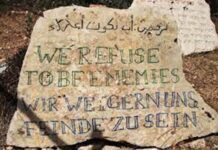Bethan McKernan
The Guardian / August 1, 2024
Israel has virtually wiped out Hamas leadership, but the group is still scrambling to organize.
The assassination of Hamas’s political chief, Ismail Haniyeh, at a safehouse during a visit to the Iranian capital Tehran, is a severe blow to the Palestinian Islamist movement, which has been engaged in intense fighting with Israeli forces in the Gaza Strip since it attacked Israel on 7 October.
Haniyeh is far from the first senior Hamas figure to be repeatedly targeted and eventually killed by Israel. The movement’s founder and spiritual leader, Ahmed Yassin, co-founder Abdel Aziz al-Rantisi, and military commander Salah Shehadeh were all assassinated by precision airstrikes inside the Palestinian enclave in the 2000s. Ahmed al-Jabari, who spearheaded Hamas’s 2007 takeover of Gaza, was killed by a drone strike in Gaza City in 2012.
While Hamas has always been able to regroup and survive, this war has left them with something of a leadership vacuum. Israel has made significant progress in fulfilling its promise that its leaders, including those outside the Gaza Strip, are “marked for death”.
Salah al-Arouri, seen as one of Haniyeh’s deputies, was killed in a strike in Lebanon in January, and Marwan Issa, Hamas’s deputy military chief, was reportedly killed in Nuseirat in March. On Thursday, the Israel Defense Forces (IDF) said it had confirmed an airstrike in Khan Younis last month successfully took out Hamas’s military chief, Mohammed Deif.
Deif had topped Israel’s most wanted list since 1995, and had survived at least seven previous attempts on his life. In May, the prosecutor’s office of the international criminal court said it was seeking arrest warrants for both Deif and Haniyeh for war crimes and crimes against humanity.
Hamas had no immediate comment on the IDF announcement but Yahya Sinwar, the group’s chief inside Gaza, cut off from the world in his bunker, must be feeling lonely.
From his base in Qatar, Haniyeh had little control or influence over events in the Gaza Strip, where Sinwar is a towering figure: it is not clear how much the 62-year-old knew about the 7 October attack beforehand. But unlike Sinwar, he was able to travel, and was Hamas’s most recognizable figure, managing the group’s relationships with Iran and allied movements around the Middle East, such as Hezbollah.
He was seen as relatively moderate, and directed Hamas’s delegations in talks mediated by Egypt, Qatar and the US aimed at a ceasefire and hostage and prisoner release deal – which now seems further away than ever.
Hamas has, in previous years, used a secret ballot in Gaza, the West Bank, Israeli prisons and abroad to anoint the political chief, but that is impossible under the current circumstances. Instead, Khaled Meshaal, currently the head of the Hamas office in the Palestinian diaspora and Haniyeh’s predecessor, is likely to step back into the role as at least the acting politburo leader.
The 68-year-old, a central figure in Hamas since the 1990s, was born in the West Bank but grew up in Kuwait and has spent most of his life outside the Palestinian territories, lobbying for the group from abroad.
In 1997, when the Mossad botched an attempt to poison him in Jordan, it so enraged the then-King Hussein that he threatened to kill the Israeli agents and scrap the peace treaty with Israel unless an antidote was handed over.
Like Haniyeh, he is viewed as more pragmatic about a two-state solution, authorizing a 2017 update to Hamas’s founding charter that implicitly accepted the existence of Israel.
He was forced into stepping down as political chief the same year, after encountering pushback for advocating for reconciliation with the West Bank-based Fatah movement. His relations with Iran and Syria have also been strained since 2011, when he supported the Sunni-led revolt against Syrian dictator Bashar al-Assad.
Khalil al-Hayya, a Qatar-based deputy who has headed Hamas’s ceasefire negotiation team, is from Gaza, and reportedly well-liked by officials in Tehran, which would make him well-placed to succeed Haniyeh.
On the battlefield, Haniyeh’s death is unlikely to have as much impact. Israel claims it has managed to eliminate half of the leadership of Hamas’s military wing, including six senior brigade commanders and more than 20 battalion commanders, and killed or wounded 14,000 militants.
While its rocket and missile capabilities have been near-extinguished, and the command and control structure has suffered, the group has still managed to transition to guerilla-style fighting, and recruit civilians wishing to fight in its ranks. Well-organized units have been able to use Hamas’s extensive tunnel network to force Israeli troops to re-engage in supposedly cleared areas, refashioning unexploded ordnance into bombs and weapons.
Israel cut off Hamas’s main supply route through Rafah in May, which at some point will inevitably affect the group’s ability to fight. But, for now, it is far from defeated.
Bethan McKernan is Jerusalem correspondent for The Guardian












